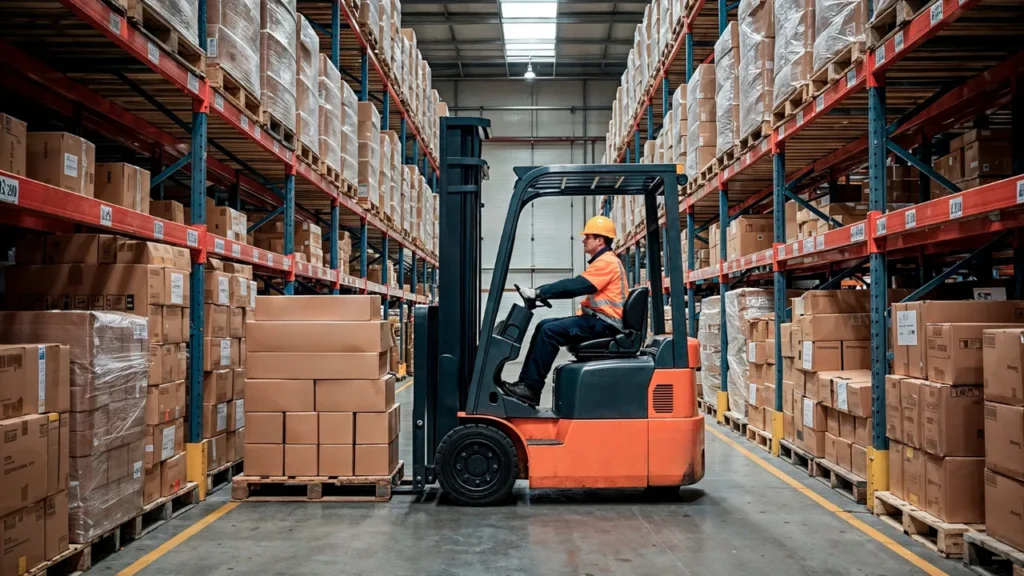The U.S. industrial real estate landscape is undergoing another transformation. As global trade policies fluctuate and tariffs continue to pressure imports, warehouse demand is experiencing a renewed surge in 2025. According to Colliers’ latest industrial outlook, companies are once again expanding logistics footprints — not just to meet growing e-commerce needs but also to protect against unpredictable supply chain disruptions.
Why Warehouse Demand is Rising Again
Over the past few years, industrial leasing cooled slightly as post-pandemic inventories normalized. But in 2025, that trend is reversing. The combination of higher tariffs, reshoring efforts, and reduced speculative construction has created a tighter and more competitive warehouse market.
- Tariff impact: Companies are front-loading imports before new trade policies take effect, increasing short-term storage requirements.
- Inventory safety: Businesses are shifting from “just-in-time” to “just-in-case” models to avoid stockouts.
- Logistics reconfiguration: Firms are building inland hubs to diversify away from coastal congestion and potential port slowdowns.
These dynamics have led to a measurable rise in occupancy levels. Colliers reported that national net absorption for industrial properties reached approximately 60 million square feet in Q3 2025 — nearly a 50 percent rebound from mid-2024 figures. This surge in warehouse demand highlights a clear shift in how corporate America manages its supply chain resilience.
Construction Pipeline Hits a Seven-Year Low
While demand is heating up, the supply side tells a different story. The total space under construction fell to roughly 270 million square feet — the lowest since 2018. Developers are exercising greater caution due to high financing costs, stricter lending terms, and ongoing uncertainty about long-term rent stability.
This slowdown has several implications for market balance:
| Market Metric | Q3 2025 | YoY Change |
|---|---|---|
| Industrial Vacancy Rate | 7.4 % | +0.7 % |
| Under Construction | 270 M sq ft | −25 % |
| Net Absorption | 60 M sq ft | +18 % |
The reduction in new supply means tenants will face less flexibility when seeking modern space. At the same time, landlords of well-located facilities may see improved pricing power through 2026. In essence, warehouse demand is outpacing the construction pipeline — a reversal of the oversupply fears seen just two years ago.
Regional Hotspots: Inland Markets Dominate
Unlike previous cycles dominated by coastal metros, today’s expansion wave is being led by inland hubs. Markets such as Phoenix, Indianapolis, Dallas–Fort Worth, and Kansas City are emerging as winners thanks to strategic access to rail corridors, lower operating costs, and abundant land availability.
For example, Phoenix recorded over 6 million square feet of new leasing activity in the third quarter alone, as large retailers and logistics operators sought to build redundancy outside California’s tariff-sensitive ports. Indianapolis followed closely behind, leveraging its position as a cross-country freight hub connecting Midwest manufacturing with southern distribution centers.
These cities demonstrate how the geography of warehouse demand is evolving. Instead of clustering near entry ports, the next generation of logistics networks is distributed across the interior — closer to end consumers and intermodal nodes.
Supply Chain Shifts Redefining Real Estate Strategy
Warehousing is no longer a passive cost center; it has become a strategic asset. The latest supply chain frameworks emphasize agility, and real estate plays a key role in achieving that. Companies want facilities that are not only larger and more automated but also positioned to reduce exposure to policy shocks.
Three major trends stand out:
- Nearshoring and Reshoring: Manufacturers are bringing production closer to North America, increasing regional storage and distribution needs.
- Automation Integration: Robotics and warehouse-management systems are changing how space is designed, with higher ceilings, better power infrastructure, and more mezzanine levels.
- Energy Efficiency: Tenants are pushing for sustainable features such as solar panels, smart lighting, and thermal-efficient materials — areas where XTD Steel Structure has become a trusted partner for durable steel framing solutions.
This alignment of technology, sustainability, and strategic risk management is reshaping every square foot of the industrial sector. A decade ago, developers competed mainly on location and price. Now, they must also deliver operational resilience.
Tariff Uncertainty: A Catalyst, Not a Constraint
Interestingly, tariff volatility — often perceived as a headwind — is now functioning as a catalyst for the warehouse demand surge. Importers and exporters are no longer delaying decisions until trade policies settle. Instead, they’re diversifying storage footprints and investing in additional capacity.
For logistics providers, this shift creates both opportunities and challenges. Short-term lease activity is increasing, but so is demand for more sophisticated warehousing contracts. Operators that can deliver flexible, tech-enabled solutions are outperforming the market.
Meanwhile, multinational corporations are modifying procurement strategies to mitigate tariff risk. This includes staging inventory at inland consolidation centers, creating multi-country sourcing plans, and re-engineering supply flows to minimize exposure to tariff-affected routes.
Industrial Vacancy Rates: Balancing the Equation
Despite the strong pickup in absorption, vacancy rates remain above the record lows of 2022. The national average of 7.4 percent reflects both new completions entering the market and selective tenant downsizing in older assets. However, analysts expect stabilization as new construction slows and leasing momentum continues into 2026.
In mature hubs like Southern California, rental growth has flattened due to high base rents. In contrast, emerging metros like Columbus and San Antonio are still experiencing double-digit rent increases driven by expanding warehouse demand.
The next 12 months will likely mark the turning point where demand overtakes supply once again — particularly if interest-rate cuts materialize and financing costs ease for developers.
Developers Shift Focus to Built-to-Suit Projects
Speculative projects are giving way to built-to-suit development. Large tenants such as e-commerce giants, automotive suppliers, and logistics service providers prefer bespoke designs with specific loading, automation, and ESG features. This customization trend benefits developers who can deliver technical sophistication rather than volume.
For example, several Tier-1 contractors have announced new projects centered around modular steel structures — an approach that reduces lead time while maintaining durability. With demand continuing to rise and material innovation advancing, steel-frame systems are expected to remain a key enabler of next-generation industrial architecture.



